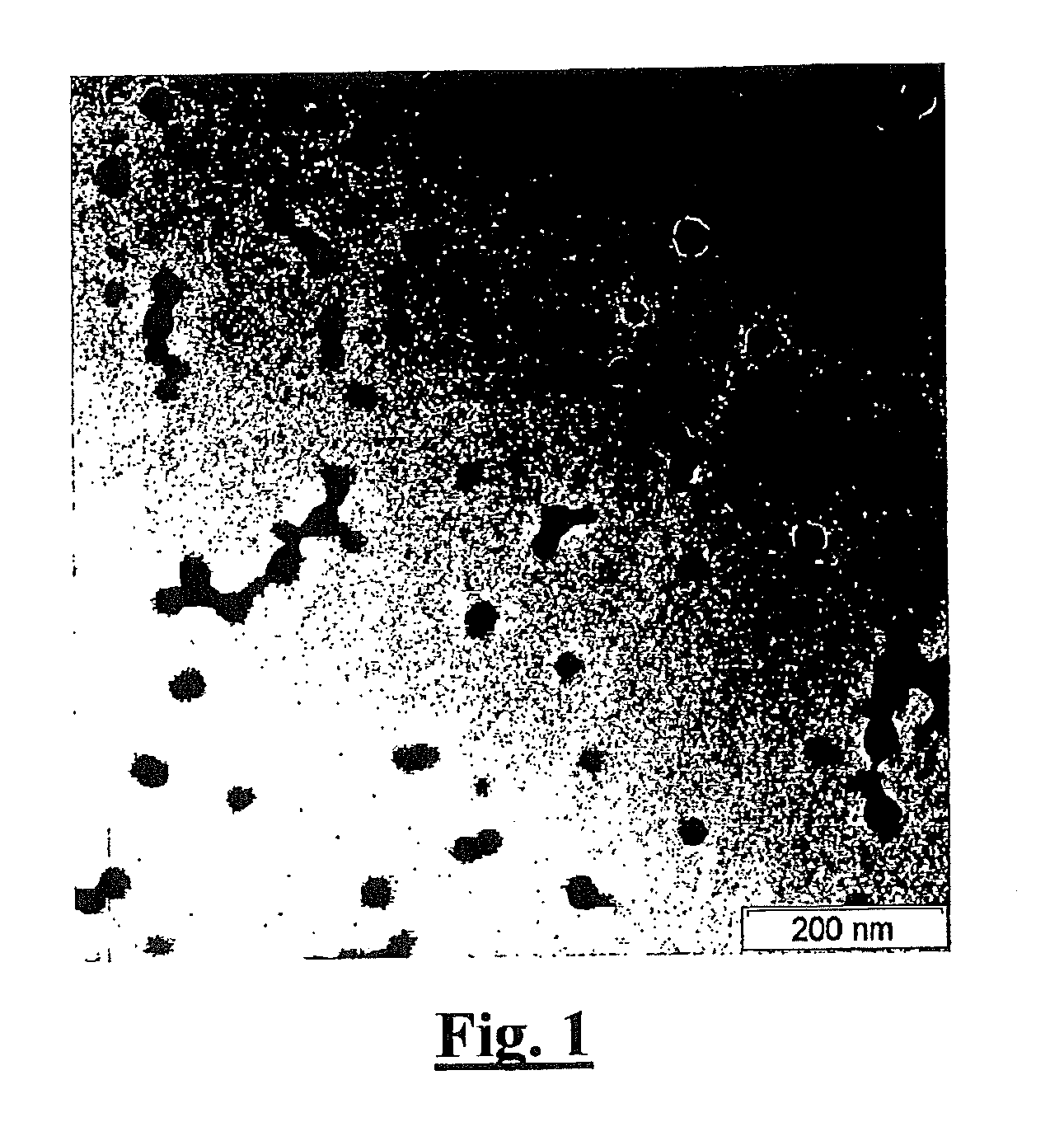Functionalized vinyl polymer nanoparticles
a polymer nanoparticle and functional technology, applied in the field of reinforcing fillers, can solve the problem of increasing the weight of the polymeric matrices which are reinforcing, and achieve the effect of increasing the weight of the polymeric matrices
- Summary
- Abstract
- Description
- Claims
- Application Information
AI Technical Summary
Benefits of technology
Problems solved by technology
Method used
Image
Examples
examples of embodiment
1. Test 1
[0123]In the examples of embodiment which follow, two fillers of (Z-)functionalised, cross-linked polymethacrylate are synthesised by free-radical polymerisation of three different monomers—methyl methacrylate (MMA), ethylene glycol dimethacrylate (EGDMA) and filler A: trimethoxysilylpropyl methacrylate (TSPM) or filler B: trimethoxysilylpropyl acrylate (TSPA)—then incorporated in a rubber composition for a tyre in the form of masterbatches obtained by coprecipitation of a latex of the VP filler and a latex of a diene elastomer (SBR).
[0124]According to one particularly preferred embodiment, the weight ratio of comonomer B bearing the Z function (here, TSPM or TSPA) is of between 20 and 30%, and that of the cross-linking comonomer C (here, EGDMA) is of between 10% and 30%.
A. Synthesis of the Polymethacrylate Nanoparticles:
[0125]The different monomers are subjected beforehand to nitrogen bubbling, as are all the aqueous solutions used with the exception of the solution of SDS...
PUM
| Property | Measurement | Unit |
|---|---|---|
| Fraction | aaaaa | aaaaa |
| Fraction | aaaaa | aaaaa |
| Fraction | aaaaa | aaaaa |
Abstract
Description
Claims
Application Information
 Login to View More
Login to View More - R&D
- Intellectual Property
- Life Sciences
- Materials
- Tech Scout
- Unparalleled Data Quality
- Higher Quality Content
- 60% Fewer Hallucinations
Browse by: Latest US Patents, China's latest patents, Technical Efficacy Thesaurus, Application Domain, Technology Topic, Popular Technical Reports.
© 2025 PatSnap. All rights reserved.Legal|Privacy policy|Modern Slavery Act Transparency Statement|Sitemap|About US| Contact US: help@patsnap.com



